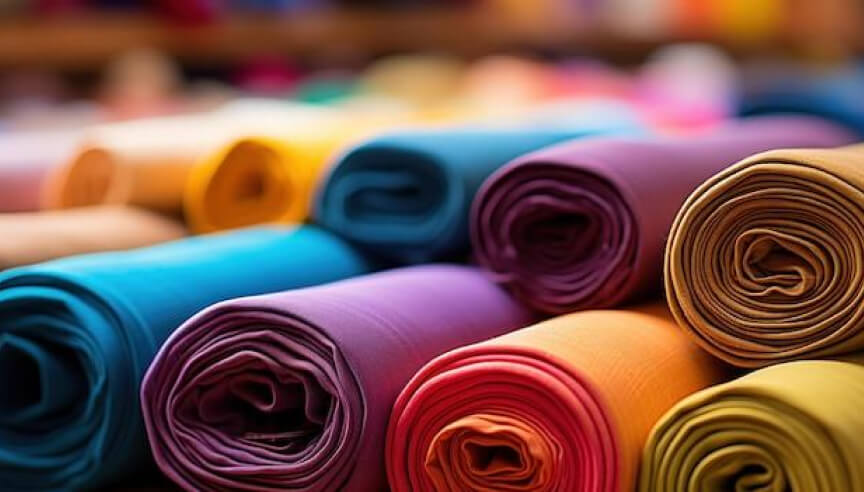Recent Posts
Textile Industry in the UAE: Water Treatment Practices

The textile industry in the United Arab Emirates (UAE) has seen steady growth, driven by the country’s strategic location, robust logistics infrastructure, and growing demand for fashion and textiles in the region. While the UAE is not traditionally known as a textile manufacturing hub, it has developed a niche in high-value-added textiles, including luxury fabrics, traditional garments, and industrial textiles. Water plays a crucial role in textile production, from fabric dyeing to finishing processes, making efficient water treatment essential for sustainable operations.
Overview of the Textile Industry in the UAE
The UAE’s textile industry comprises a mix of small and medium-sized enterprises (SMEs) and larger industrial units, with a focus on high-quality products for export and local markets. Dubai, in particular, has emerged as a key player in textile trading, with the Dubai Textile City serving as a hub for international trade. The industry is supported by government initiatives aimed at boosting non-oil sectors, along with free zones that offer favorable business environments.
The textile industry in the UAE is highly competitive, relying on advanced technologies and sustainable practices to differentiate itself. As the global demand for eco-friendly textiles rises, the industry is increasingly focusing on reducing its environmental footprint, particularly in terms of water usage and treatment.
Water Usage in the Textile Industry
Water is a vital resource in textile manufacturing, used extensively in processes such as dyeing, printing, and finishing. These processes require significant volumes of water, which, if not managed properly, can lead to high levels of pollution. The industry faces challenges in ensuring that wastewater is treated effectively before being discharged or reused, to prevent contamination of local water bodies and comply with environmental regulations.
Types of Water Treatment Used in the Textile Industry
1. Effluent Treatment Plants (ETPs):
- Effluent Treatment Plants are commonly used in the UAE’s textile industry to treat wastewater generated during production processes. These plants typically involve primary, secondary, and tertiary treatment stages.
- Primary Treatment:
Involves the removal of large solids and suspended particles through screening, sedimentation, and flotation. - Secondary Treatment:
Uses biological processes, such as activated sludge, to break down organic matter in the wastewater. - Tertiary Treatment:
Involves advanced filtration and chemical treatment to remove any remaining pollutants, ensuring the treated water meets environmental standards for discharge or reuse.
2. Dyeing and Printing Wastewater Treatment:
- Dyeing and printing processes generate highly colored wastewater, which requires specialized treatment methods to remove dyes and other chemicals.
- Chemical Coagulation and Flocculation:
These processes involve adding chemicals to the wastewater to aggregate and remove colorants and other contaminants. - Advanced Oxidation Processes (AOPs):
Techniques such as ozonation and Fenton’s reagent are used to break down complex dye molecules and other organic pollutants, making the water suitable for reuse or safe discharge.
3. Water Recycling and Reuse Systems:
- To reduce freshwater consumption, many textile manufacturers in the UAE are implementing water recycling and reuse systems. These systems treat and reuse wastewater within the production process, significantly lowering the demand for fresh water.
- Membrane Filtration:
Technologies such as reverse osmosis and nanofiltration are used to purify wastewater for reuse in non-potable applications, such as rinsing and washing fabrics. - Zero Liquid Discharge (ZLD):
Some facilities are adopting ZLD systems, where all wastewater is treated and recycled, leaving no liquid waste. This approach is highly effective in conserving water and minimizing environmental impact.
4. pH Control and Neutralization:
- Textile wastewater often has an acidic or alkaline pH, which can be harmful if released untreated. pH control systems are used to neutralize the wastewater before it undergoes further treatment.
- Chemical Neutralization:
Acids or bases are added to adjust the pH of the wastewater to a neutral level, ensuring it is safe for discharge or subsequent treatment stages.
5. Sludge Management:
- The treatment of textile wastewater generates sludge, which contains concentrated pollutants. Effective sludge management practices are essential to minimize environmental impact.
- Dewatering and Disposal:
Sludge is typically dewatered to reduce its volume and then disposed of in an environmentally responsible manner, such as through landfilling or incineration.
Conclusion
The textile industry in the UAE is committed to sustainable practices, with water treatment playing a key role in minimizing environmental impact. By adopting advanced water treatment technologies and focusing on water recycling and reuse, the industry is addressing the challenges of water scarcity and pollution. These efforts not only help the industry comply with stringent environmental regulations but also enhance its competitiveness in the global market. As the UAE continues to grow as a textile hub, the importance of efficient and sustainable water management will remain central to its success.
